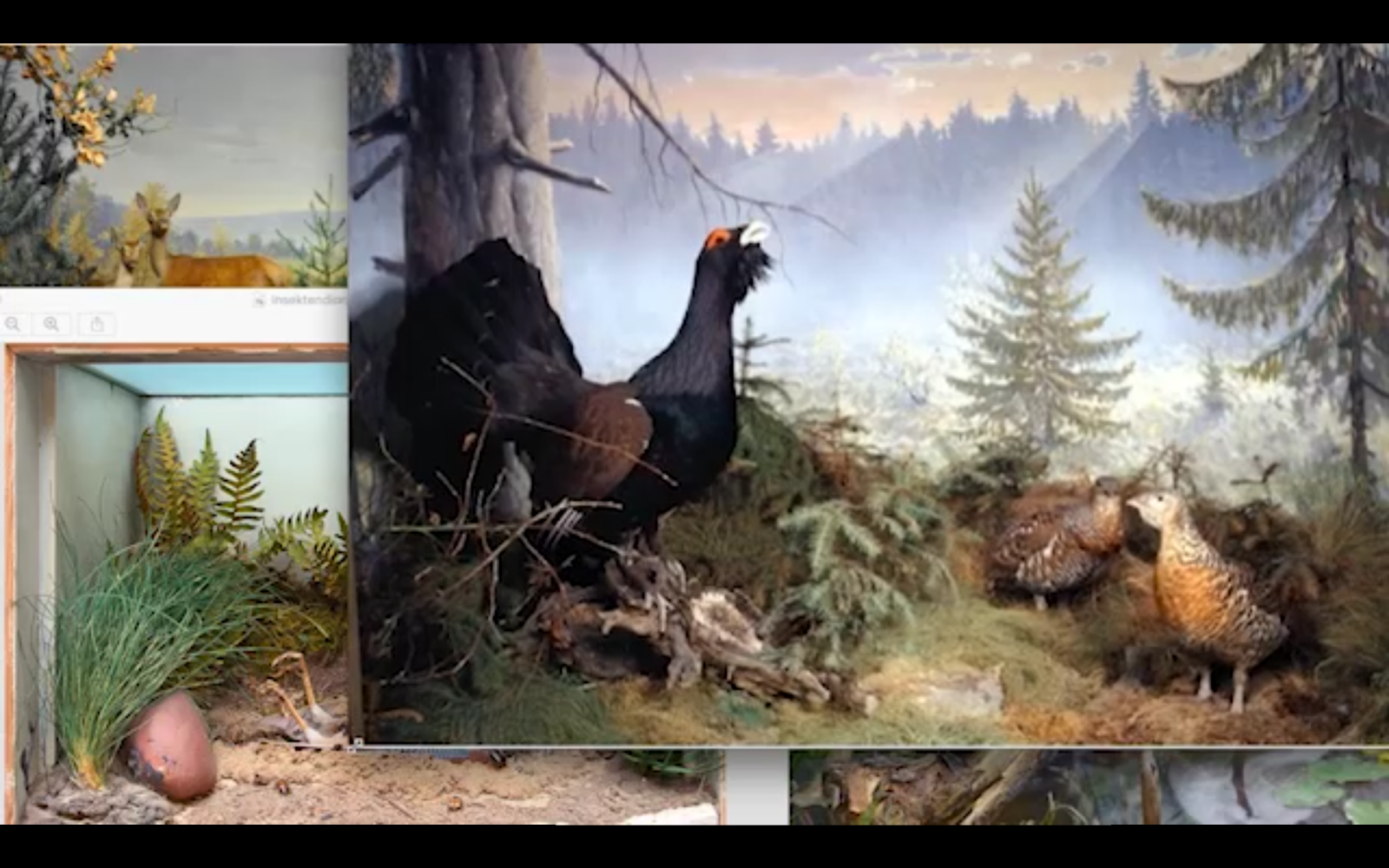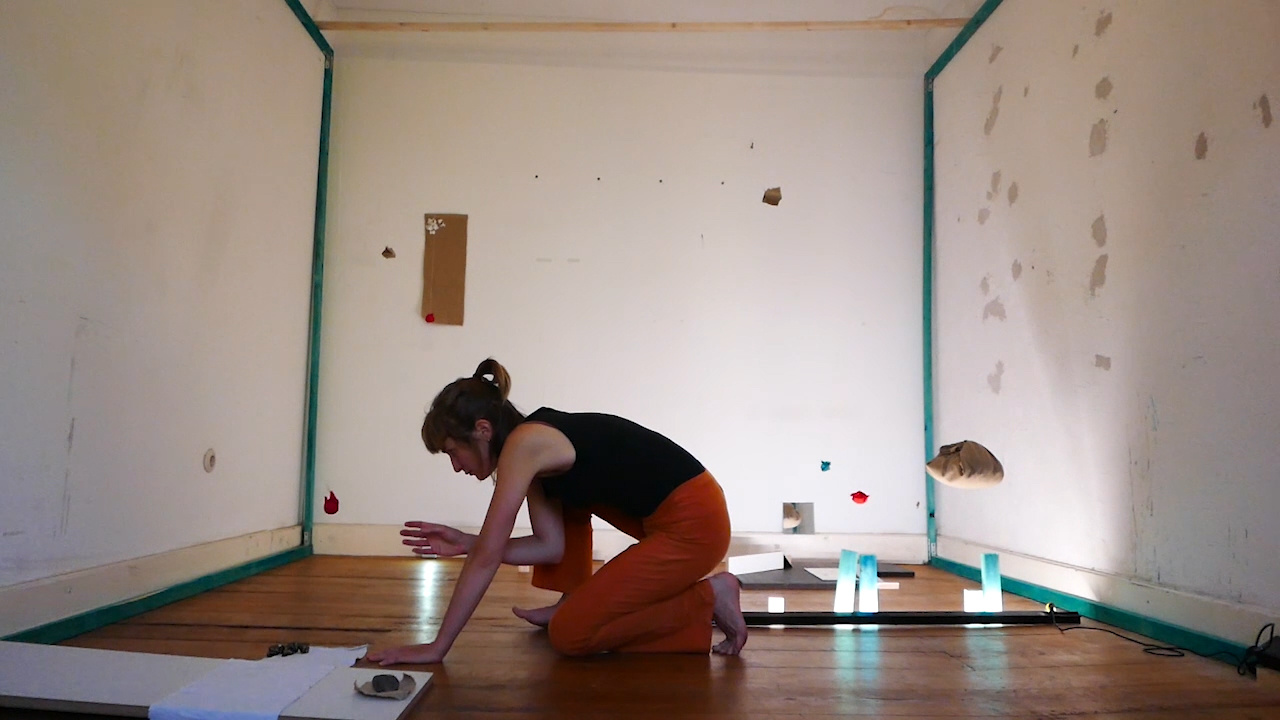On being part of the frame: Dwelling
Video-Tutorial #5 von Mira Hirtz
In the last Video Tutorial #4, we already dealt with moving through and with the framework – the framework meaning a common way of looking at the world as a territory that human action is placed in. I quoted Bruno Latour in saying that the framework now »participates in that action. […] Space has become an agitated history in which we are participants […].« (»Down to Earth«).
In Video-Tutorial #5, titled »On being part of the frame: Dwelling« we want to explore anew this idea that in the Terrestrial, there is no distinction between the frame and our action. As much as the frame takes part in the action, we are part of the frame. Another word that can be used to describe this perspective is dwelling: to take into account a multiplicity of actors which are co-producing the world rather than categorizing »organisms on the one side and an environment on the other« (»Down to Earth«).
How can we practice this? How to move from looking at the environment as if we would look through a frame to dwelling as part of this frame?
Is it about getting closer? Latour makes clear that »one cannot pass through a series of interlocking scales, as in the illusory impression of zooming that we can get from Google Earth« (»Down to Earth«). How to grasp this parallelism of our own being and the being as part of something, and within this parallelism the co-production of the world?
Let us practice to dwell by attending to our body and looking at the space around us as if they would be scenes or frames. Let us play with the idea that we can step in and out of those frames, and notice the changes that manifest in our perception.
With special thanks to Marlon for support in installation and to the temporary collective Láu for support in sound collage.
Video Tutorial #5 On being part of the frame: Dwelling
Übersetzung des gesprochenen Textes:
Wenn ihr einen Schritt zurücktretet und eure Umgebung anschaut, was seht ihr?
Wenn wir unseren Blick rahmen, erscheint eine Szene.
Lasst uns diese Szene betrachten. Was ist der allgemeine Eindruck? Wirkt sie vertraut oder fremd? Welche Details seht ihr? Gibt es ein verbindendes oder unterbrechendes Element? Denkt ihr, dass ihr die Kausalitäten dieser Szene von hier verstehen könnt?
Lasst uns heute erproben was es heißen könnte, Teil des Rahmens zu werden, den ihr anschaut. Und lasst uns erproben etwas so anzuschauen, als hättet ihr es niemals zuvor betrachtet. Eine neue Welt, die trotzdem seltsam bekannt ist.
Aber um zu beginnen, lasst uns unserer Augen für einen Moment schließen. Spürt euch selbst, euch, wie ihr hier steht vor dieser Szene. Wie betrachtet ihr euch selbst? Wir haben schon zuvor bemerkt, dass der Atem hilft zu registrieren, wo und wie ihr euch gerade fühlt. Wie ist eurer Atmen gerade? Welche inneren Räume könnt ihr wahrnehmen? Welche innere Landschaft ist präsent?
Und könnt ihr diese Eindrücke beibehalten, wenn ihr eure Augen wieder öffnet, langsam?
Um wieder dies Szene vor euch zu betrachten.
Lasst uns näher herangehen. Bemerkt, wie es sich anfühlt in das Bild hineinzutreten, welches ihr vorher aus der Distanz gesehen habt. Wo fängt es an?
Findet oder zeichnet eine imaginierte Linie ein. Hier ist der Rahmen. Von hier aus tretet ihr ein.
Wie tretet ihr dein? Aufmerksam, selbstbewusst, vorsichtig?
Und was seht ihr jetzt? Was lenkt eure Aufmerksamkeit?
Seid neugierig. Als sei dies eine unbekannte Welt. Traut euch, zu berühren. Ihr seid schon am berühren.
Wie bewegt ihr euch innen drin? Hindurch? Lasst euren Körper entscheiden.
Reagiert ihr? Folgt euren Impulsen.
Lasst eure Aufmerksamkeit wandern und springen...
...oder ruhen und sich ausdehnen.
Fallen die Details auf? Neue Perspektiven? Ebenen oder Proportionen? Nachbarschaften oder Kausalitäten? Winkel, Volumen, Dichte?
Lasst uns unseren Fokus erneut darauf richten, wo ihr seid. Könnt ihr euch noch daran erinnern, wie sich eure inneren Räume angefühlt haben? Und wie weit könnt ihr euch ausbreiten, wo sind eure Grenzen? Wir nennen das die Kinesphere eures Körpers: den Raum, den ihr einnehmt.
Was ist die Relation dieser, eurer Struktur zu der Struktur, von der ihr ein Teil seid?
Und was sind deren Grenzen?
Könnte eure Struktur in dieser Struktur wohnen?
Was könnten die Gesetze dieser Struktur sein?
Untersuche ihre Dynamiken
Zentrum und Peripherie
Folgt euren Wahrnehmungen, Formen, Farben.
Seid neugierig. Als sei dies eine Welt, in der ihr wohnt. Traut euch, zu berühren. Ihr seid schon am berühren.
Seid spielerisch, schnell, werdet bewegt.
Oder pausiert. Reflektiert.
Während ihr wohnt, werdet ihr ebenfalls beobachtet?
Dann merkt, wann es an der Zeit ist, wieder hinauszutreten.
Wie schaut ihr jetzt auf die Szene?
Hat sich etwas verändert?
Sieht es vertraut aus oder fremd?
Seid ihr jetzt getrennt von, oder immer noch Teil des Rahmens?
Danke für eure Aufmerksamkeit, und viel Spaß bei der Untersuchung dessen, ein Teil des Rahmens zu sein: zu wohnen.

